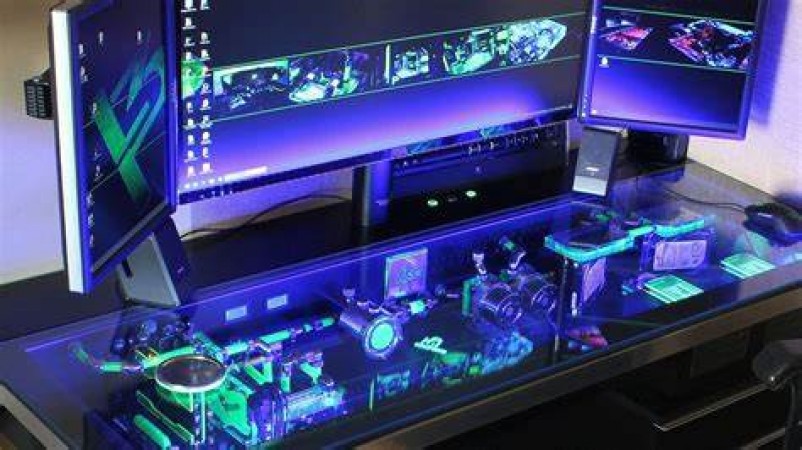
In the world of gaming, having a powerful and reliable Gaming PC is essential to fully enjoy the latest games with stunning graphics and smooth performance. While buying a pre-built gaming PC is an option, building your own gaming PC not only allows for customization but can also be a rewarding experience. In this article, we will guide you on how to build a gaming PC from scratch, ensuring you get the best gaming experience within your budget.
Components Needed to Build a Gaming PC
Before diving into the building process, it's crucial to understand the essential components needed for a gaming PC.
1. Processor (CPU)
The CPU is the brain of your gaming PC. It determines how well your PC can handle complex tasks and process game data. For gaming purposes, multi-core processors like those from AMD Ryzen or Intel Core series are preferred.
2. Graphics Card (GPU)
The GPU, also known as the graphics card, is responsible for rendering images and videos. Gaming PCs require powerful GPUs like NVIDIA GeForce or AMD Radeon to deliver high-quality visuals without lag.
3. Motherboard
The motherboard is the central hub that connects all the components of your gaming PC. Ensure it is compatible with your chosen CPU and GPU.
4. Memory (RAM)
RAM allows your PC to access and use data quickly. For gaming, at least 16GB of RAM is recommended.
5. Storage (SSD/HDD)
Fast storage is vital for reduced loading times. Consider an SSD for faster boot times and an HDD for additional storage.
6. Power Supply Unit (PSU)
A reliable PSU is essential to provide adequate power to all components. Choose a PSU with enough wattage and efficiency.
7. Cooling System
Prevent overheating by installing an effective cooling system, such as air or liquid cooling.
8. Case
Select a case that accommodates all your components and offers good airflow for cooling.
Choosing the Right Components
When building a gaming PC, it's essential to choose components wisely.
1. Budget Considerations
Set a budget and allocate it efficiently among different components to strike a balance between performance and cost.
2. Compatibility of Components
Ensure all chosen components are compatible with each other to avoid any compatibility issues.
3. Future Upgradability
Plan for future upgrades by selecting a motherboard and PSU that can accommodate new components.
Step-by-Step Guide to Building a Gaming PC
Now that we have all the necessary components and considerations sorted, let's start building the gaming PC step by step.
1. Preparing the Workspace
Find a clean and well-lit workspace with sufficient room to assemble your gaming PC.
2. Installing the CPU and Cooler
Carefully install the CPU into the motherboard's CPU socket and attach the CPU cooler using thermal paste.
3. Placing the Motherboard in the Case
Secure the motherboard in the case using the appropriate standoffs and screws.
4. Installing RAM and Storage Devices
Insert the RAM modules into the motherboard's RAM slots and install the SSD/HDD in the drive bays.
5. Installing the GPU
Insert the GPU into the appropriate PCIe slot on the motherboard and secure it with screws.
6. Connecting Cables and Power Supply
Connect all necessary cables, including power cables, data cables, and the front panel connectors, to the motherboard.
7. Installing the Operating System
Insert the OS installation media and follow the on-screen instructions to install the operating system.
BIOS Setup and Driver Installation
After building your gaming PC, access the BIOS and configure settings accordingly. Install the necessary graphics drivers and update other drivers for optimal performance.
Essential Software and Overclocking
Install essential software like gaming platforms, antivirus, and performance monitoring tools. If you're an advanced user, consider overclocking your CPU and GPU to squeeze out extra performance.
Maintaining and Upgrading Your Gaming PC
To keep your gaming PC in top condition, regularly clean and dust it. You can also upgrade individual components like the GPU or add more RAM for better performance.
Building a gaming PC may seem daunting at first, but it offers numerous benefits in terms of performance, customization, and future upgradability. By carefully selecting the right components, following a step-by-step guide, and maintaining your PC, you can create a gaming rig that provides an immersive and enjoyable gaming experience.
Unlocking the Power of Human-Machine Collaboration: A Path to Industrial Advancement
Ensuring Safety and Mitigating Risks: A Comprehensive Guide to Industrial Safety and Risk Management
YouTube TV Unveils Exciting Multiview Feature Allowing Simultaneous Streaming of Four Channels